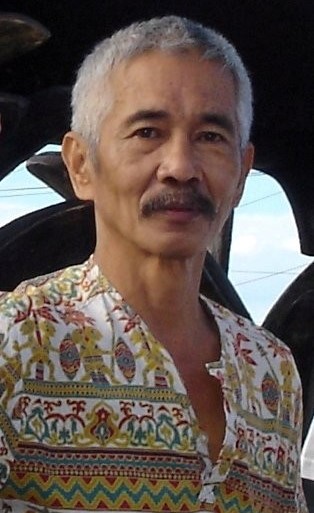TWO CENTS
By Dong Delos Reyes
Home, planting camote
Share
One silly reason to heed that halcyon counsel, "Go home and plant camote," was I wanted to bring back scarab beetle, dor beetle, May/June beetle, or salagubang. It was a lovable toy of boyhood years past – the pair of rear legs are tied with a string, then, poor critter is whirled to fly, fly, and fly some more, much to our amusement. Kids these days never have such fun.
Stuck with bubble gum back-to-back, the pair of bugs are laid sideways to go through a contest of strength – which lasts no more than a minute, one of them manages to heave itself and carry on its back the losing rival. Losing bug is yours. More chewed gum to glue a pair of combatants anew. Such uncomplicated form of fun taught kids of yore a thing or two about picking better bugs to pit in such a fight.
If my memory serves me right, there was this 1960s "The Twilight Zone" episode on TV that had an actress who never aged a day across decades. She was portraying roles that banked on her timeless beauty. Her secret? A scarab drawn from the tombs of ancients that allowed her to suck the youth from a long line of victims.
A similar talisman of alien biotechnology chose archeologist (not exactly an Indiana Jones), one Jaime Reyes, to be the host of out-of-this-Third-World superpowers. He turned into the comic book superhero, "Beetle Bailey", ooops, "Blue Beetle"! One comic book I've kept for years had him fighting demon-god Horus of the Egyptian pantheon.
By the way, Beetle Bailey is also a comic book character, laid back, a free spirit in the regimented military whose ways and antics gave me gas pains.
A major film outfit coughed up US$104M to bring back Blue Beetle onscreen in August this year – touted as "a great family film."
In a try to cross Ipomea batata (camote or sweet potato) with its next of kin Ipomea aquatica (kangkong, phak bung), local plant breeders turned up "kangkote." The hybrid is profuse in providing nutrient-rich tops that are a staple in Philippine cookery. The breeders are still likely trying to turn up a water-dwelling hybrid that would produce camote-like tubers for easier harvesting.
Sure, kamote tubers fetch at least PHP60 a kilo – more nutritious than potato or rice as it packs complex fiber, flavonoids (that combat cancer), and antioxidants (to keep the body young-looking). This tuber of choice for body builders, mixed martial artists, and trim fashion models leaves a full tummy feeling. And Soju tipplers will tell you, that Korean grog is turned up from sweet potato extract, more potent than potato-based vodka.
So, how does camote tie in with my quixotic bid to bring back sacred scarab beetles?
Unlike uwang, or rhino beetles, that kill off coconut palms by depositing their eggs on palm trunks – and consequently eating up the entire coco palm – sacred scarabs lay their eggs near camote patches. The grubs hatched from those eggs burrow their way into camote tubers, eat them... we call them "ulalo," the grub-infested tuber is unfit to eat. Those grubs morph into beetles. Nudged by monsoon rains, the beetles emerge, fly off to browse on leaves of mango, sineguelas or tamarind trees.
The scarabs are shaken off those trees. To be collected as toys for a child's pastime. Or gathered by the buckets, wings and feet snipped, the fat bodies to be drenched in vinegar, soy sauce, crushed garlic, and a bay leaf or two – yes, done adobo-style, cooked to tasty, crunchy perfection.
And those sacred scarabs won't turn one into a comic book superhero. They're infinitely more nutritious and tastier than burgers or chips that come in plastic wrappers.
Editor’s note: The opinions expressed in the foregoing article are solely the author’s and do not reflect the opinions and beliefs of the Philippine News Agency (PNA) or any other office under the Presidential Communications Office.
Comments
About the Columnist

Dong A. de los Reyes began his writing journey in 1978 as a business reporter. He tacks over 20 writing awards- five from the Don Carlos Palanca Memorial Awards for Literature- for his forays into fiction, poetry, and dramaturgy. He also describes himself more of a soil scientist than agronomist. He is a keen student of the combat arts, with a second degree black belt in gojukai, which was developed by a peasant from Okinawa named Chojun Miyagi. He is married to a campus beauty queen who bore him three sons and a daughter. They have six grandchildren, two of whom are taekwondo black belts.
